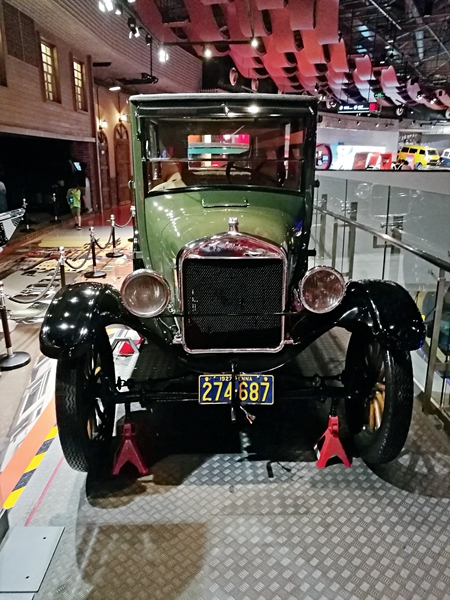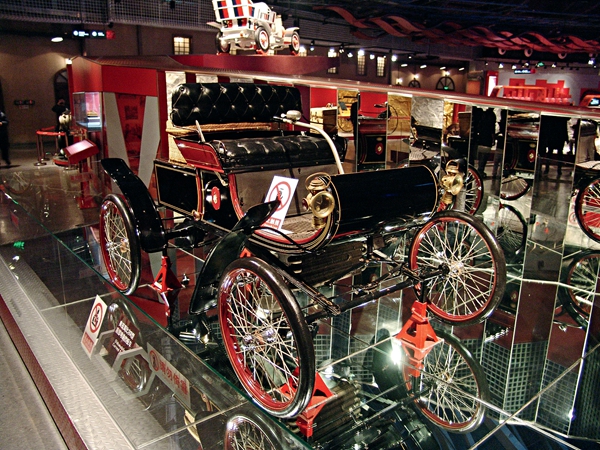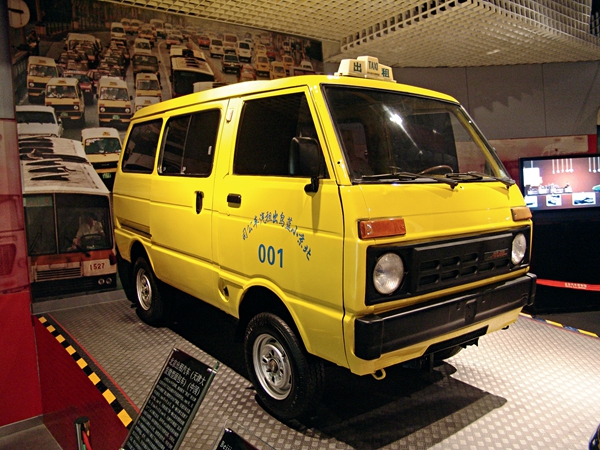A Car-lovers' Paradise in Fengtai
- By Brian Salter
 0 Comment(s)
0 Comment(s) Print
Print E-mail China Today, September 22, 2017
E-mail China Today, September 22, 2017
Moving forward to 1906 and a French classic – a De-Dion Bouton. In the first ever Beijing to Paris rally, held in 1907, only five cars made it to the finish line, two of them being De-Dion Boutons; and then in 1908 the Ford Model T came into being. At first they were all manufactured in the traditional way and sold for around US $850. But in 1931 Henry Ford had the idea of creating an assembly line – a world first. Output increased dramatically and the price fell to as low as US $265. The age of cheap mass transport had arrived.
|
|
|
A 1908 Ford Model T – the first car to be manufactured on an assembly line. |
Cheap mass transit was one thing; but luxury cars dominate this exhibition. Here you'll find a Lincoln KB-V12 Dual-cowl Phaeton, for example. Lincoln was Ford's luxury brand, used by U.S. presidents, among others. This model was built in 1932, one of only 28 units ever produced.
There's also a copy of the 1901 Duryea Runabout "L" (this one was actually made in 1903) given to the Empress Dowager Cixi for her 60th birthday by Yuan Shikai, who had bought the car in Hong Kong. It was Yuan, you may recall, who made a short-lived attempt to revive the Chinese monarchy in 1915, with himself as the "Great Emperor of China" before being widely denounced and dying the following year.
Although classic cars attract the most selfie-snappers, many of the Chinese autos are what attract the true die-hard enthusiasts. After the founding of the People's Republic of China, the first vehicle off the production line was a Jiefang (Liberation) brand truck, manufactured by Changchun First Automobile Works (FAW) in 1956. The first sedan (named Dongfeng) was also made by FAW in 1958. It was the only domestically made car used for official business and was manufactured for the next 30 years. We are told that after Chairman Mao tried out the car for ride and comfort, he smiled and proclaimed, "How wonderful it is to ride in a car of our own!" Four months later the Hongqi (Red Flag) became the first luxury sedan to roll off the production line; but during the 1980s, they stopped being made owing to their massive fuel consumption, high costs, and low production rate. In 1984, the Beijing Jeep Automobile Company marked the first joint venture in the car sector in China.
|
|
|
An Oldsmobile Curved Dash. |
Turning to public transportation, Tianjin saw China's first tramcar in 1906 while Shanghai witnessed its first streetcar in 1908. Beijing only commenced the operation of street cars in 1924. From 1984 to 1999, the Tianjin Automobile Plant manufactured 30,000 Daihatsu-style mini-vans, 90 percent of which were snatched up by taxi companies and became the first mass-used taxis, to be known as Yellow Insects. They were cheap and spacious and met the needs of the market, as people's incomes were generally low.
|
A Tianjin "Yellow Insect." |
Since 2000, Chinese brand vehicles have gradually taken over, with home built trucks and coaches dominating the domestic market. In 2009 China became the world's largest automobile manufacturer.
To get to the museum, take Line 9 to Fengtai Science Park station; use exit B and walk 200 meters north, then 300 meters east. Look for the old locomotive ticket office before you enter the building. Admission is RMB 30.
Brian Salter is a broadcaster and journalist who has been working in China for the past five years.









Go to Forum >>0 Comment(s)